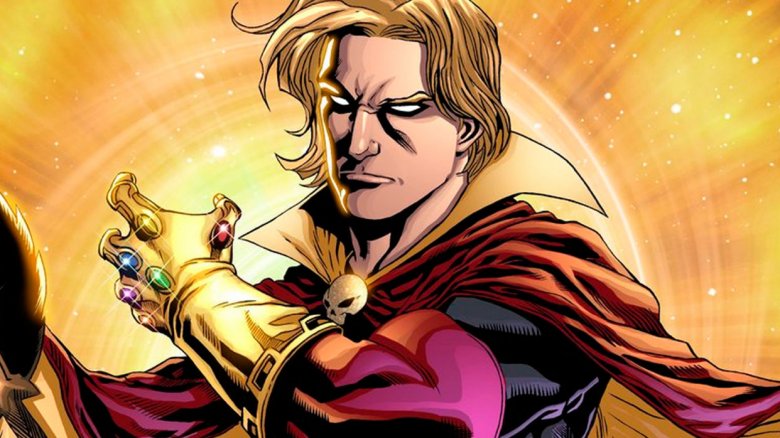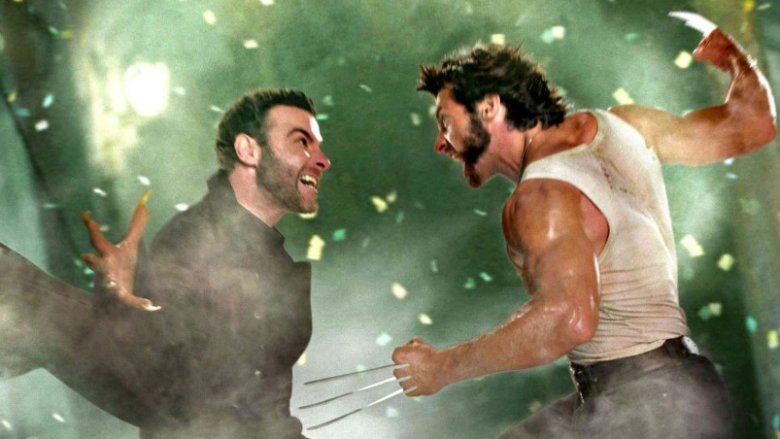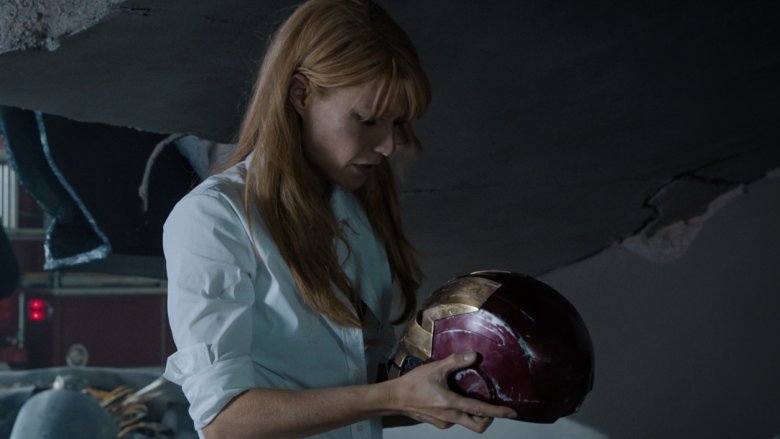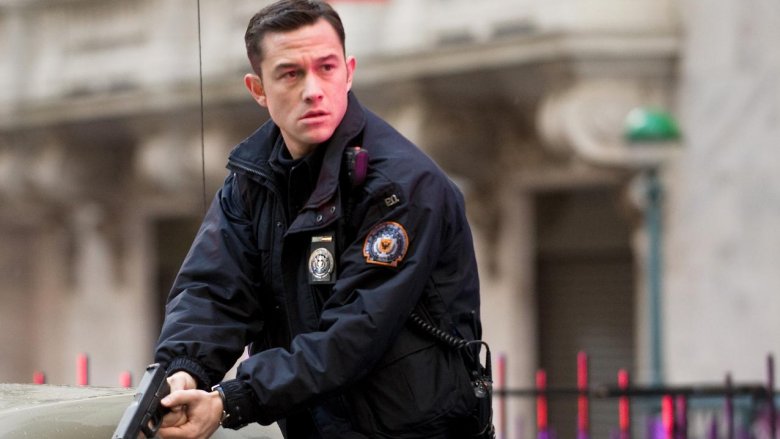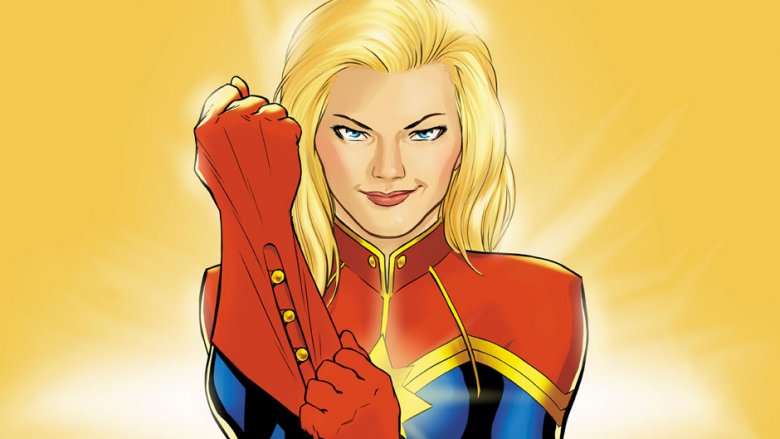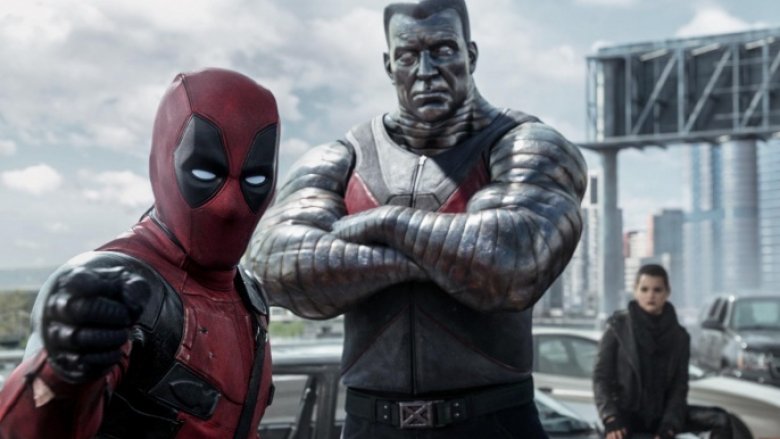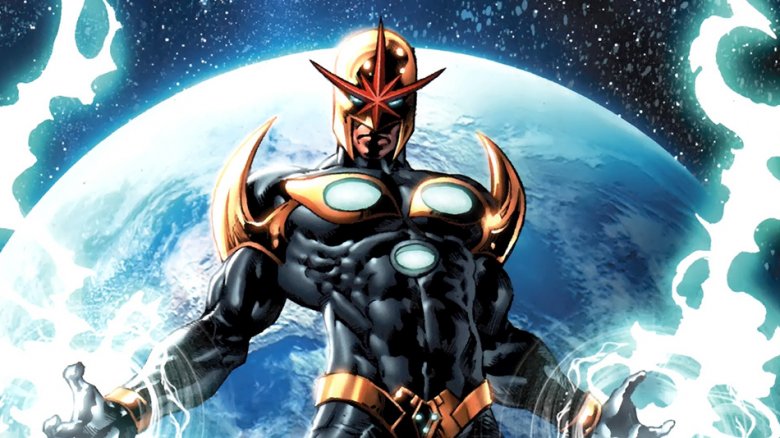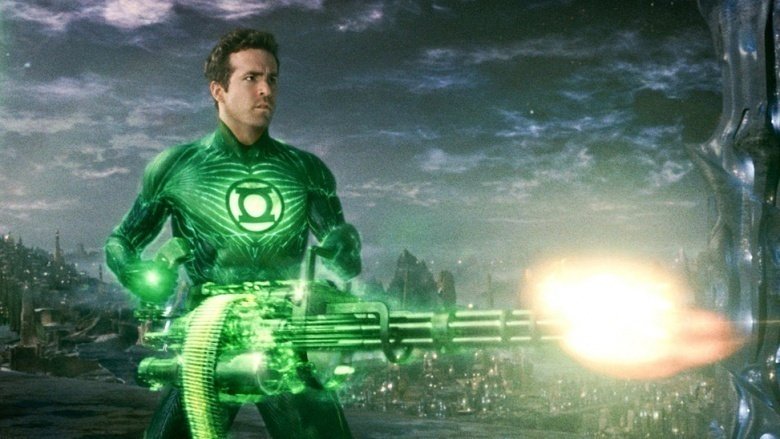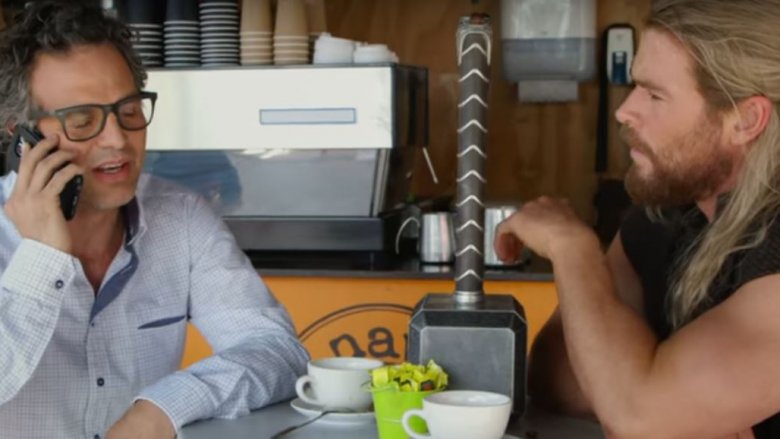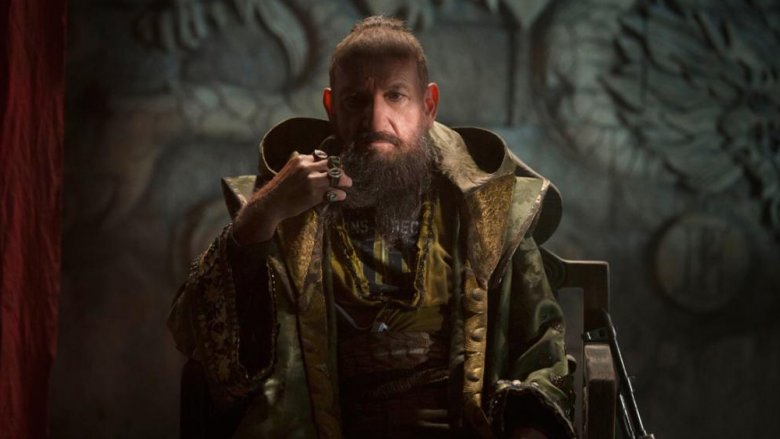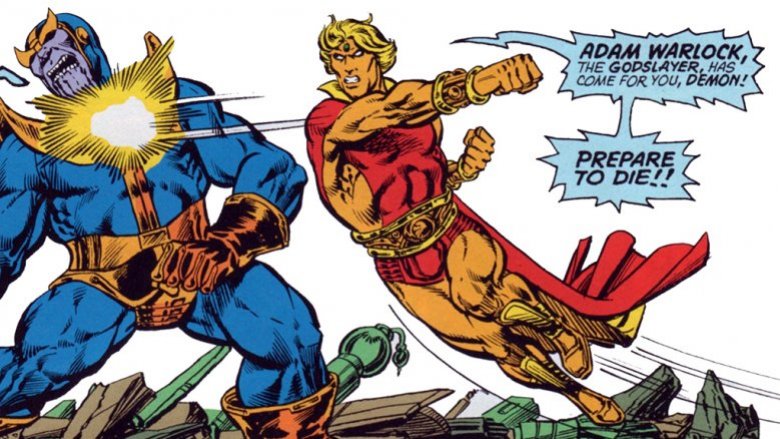The Real Reason These Characters Weren't In Your Favorite Superhero Movies
Once resigned to comic store lineups and the mildewed basement collections, superheroes are now a multi-billion dollar enterprise with global recognition and a massive fan base. As a result, countless classic and obscure heroes from Marvel, DC, and other illustrated worlds have now debuted on the big screen. Of course, some of our favorite comic heroes are still waiting for their chance to shine, while others were chopped out of popular features due to time or overcrowding. Usually these absences make sense, but not always.
Sabretooth in Logan
As the final chapter in the Wolverine saga, Logan brings the archetypal antihero's cinematic story full circle. Not without flaw, director James Mangold managed to revamp the superhero genre while also wrapping up the last days of James Howlett and Professor Charles Xavier with style, grit, and poignancy, leaving fans saddened at both characters' departures but satisfied with their loving send-offs. If there are any beefs with Logan — and there always are a handful — it's the cathartic final duel between Wolvy and longtime nemesis Sabretooth.
Despite the otherwise lamentable aspects of X-Men Origins: Wolverine, Liev Schreiber's take on the iconic mutant antagonist quickly became into a bright spot. Since then, many fans, as well as Hugh Jackman, Mangold, and Schreiber himself, have waited patiently for a second go. Slipping a grudge match into a movie loaded to bear with plot points, on the other hand, is a tricky thing. Despite Logan's very metaphysical duel to the death with his clone-form, X-24 — who even looked a wee bit like Sabretooth — Victor Creed was still sorely absent from the proceedings.
Schreiber was invited to reprise the role and interested in doing so. Unfortunately, due to scheduling conflicts with his primary breadwinner, Ray Donovan, the actor was unable to slot in some brawl time with good old Wolverine. Pity, because we would've loved to see the second round, or even watch the two old enemies find a common ground.
Pepper Potts in Captain America: Civil War
One of Marvel's first breakout characters and strongest early female characters is Gwyneth Paltrow's Virginia "Pepper" Potts. Introduced in the first Iron Man, Pepper quickly outgrew her assistant role, becoming a true equal to Tony Stark. Sadly, in spite of receiving her own Rescue suit, Pepper never got a chance to shine beyond the Iron Man movies.
Many of us hoped she'd drop by for at least a moment during the clash of the titans of Captain America: Civil War. Alas, she was nowhere to be found, breaking up with Tony off-screen at the beginning of Civil War. In part, her absence was due to her three-film contract with Disney and Marvel running its course. But there was another reason Stark's beloved adviser was left out of the superhero fray: her role as Tony's voice of reason.
During the Civil War commentary, screenwriter Stephen McFeely and co-director Joe Russo dug into the rationale behind the dynamic duo's abrupt breakup. Tony needed a reason to be at-odds with the world so that when he learns Bucky Barnes is responsible for the death of his parents, he pops off. As Russo explained, Stark needed to be "off-balance" and "really emotionally vulnerable. So, Pepper is out of his life. It clearly is an issue for him." Pepper was a colossal positive influence on Stark. Without her presence, not only is Tony unstable, but has no one to talk him down from the rash, authoritarian, and very punchy actions that ensue.
Robin in the Dark Knight Trilogy
Okay, so this one is a bit of a gray area. Director Christopher Nolan truly deconstructed the classic Bat-mythos, creating a more realistic world — well, in superhero-land, anyway — for the Caped Crusader, his classic characters, and the rogues gallery. Heck, Selina Kyle is never even called Catwoman in the movie. He also did away with Bruce Wayne's classic sidekick Robin. Well, sort of.
Starting out with a younger, rawer Bruce Wayne, Nolan originally acknowledged the relative impossibility of his archetypal sidekick, saying the Boy Wonder would be "in diapers" at that point. Nolan's sentiment was echoed by Bale himself, who threatened (perhaps halfheartedly) to cast off the cowl if Robin ever stopped by. And while Batman never takes in any orphans named Tim Drake, Dick Grayson, or Jason Todd — which sounds like more like stranger danger than foster parenting — Nolan did pepper his films with Easter eggs about the Bat's sidekick. In addition, Joseph Gordon-Levitt's character John Blake was technically (sort of, kind of) revealed as Robin. Or at least his first name was revealed to be Robin, and he stood to inherit the mantle, as well as the Batarang, Batcopter, and shark repellent, after Bruce's retirement.
So, was Robin even in Batman? Maybe he was, maybe he wasn't — and maybe the spinning top fell over, or it didn't. Does it really even matter?
Captain Marvel in The Avengers: Age of Ultron
Say what you will about Joss Whedon, but his stories are usually crisp, his movies and TV offerings are fandom-friendly and often next-level, and he champions strong women in media. When Whedon assembled the Avengers for their showdown with robo-James Spader in Age of Ultron, he faced any number of challenges, such as bringing Fox-Disney shared "mutant" darlings Quicksilver and Scarlet Witch onto the roster. The inclusion and subsequent (spoiler) death of Quicksilver worked out well for Marvel, if a tad confusing. Whedon even got to bring his own vision for The Vision into focus, but there was one character he sought that didn't make the final cut: Captain Marvel.
Unlike Spider-Man, who Whedon also wanted but was a victim of those pesky property rights, until recently anyway, Captain Marvel had no such hitches. She was free and clear by Marvel Legal, but this time Marvel Studios president Kevin Feige put the brakes on. Far from hating-on Carol Danvers, Feige wanted to keep the ultra-powerful heroine in the wings, because he feared she'd become just another face in a sea of Avengers.
Feige instead felt the need to properly introduce Captain Marvel, rather than throwing her against the character wall and hoping she stuck. And while the Marvel Cinematic Universe is sorely lacking in super-heroines, we certainly agree that Ms. Danvers deserves a properly grandiose introduction.
Deadpool in X-Men movies
Once more, we dig into a bit of a gray area of the superhero pantheon. Technically, Deadpool appeared briefly in the cinematic abomination of X-Men Origins: Wolverine, and many would argue his appearance was nothing less than a travesty — seriously, the Merc without a Mouth? Who thought that was a good idea? Anyway, despite alienating fans and, well, everyone with taste, Wade Wilson's bizarre visage was probably (at least to a degree) a measure to curb his trademark potty-mouth and penchant for fourth-wall breaking — something off-putting in the tonally serious X-Men films.
After X-Men: Days of Future Past completely rewrote the timeline, Deadpool's sole enterprise is now his self-titled flick and its follow up. Wade Wilson may be part of the overall continuity, but like Logan, he's somewhat removed and isolated from the other X-movies. As writer Paul Wernick explains, Wade "exists in his own universe. He's part of the larger X-Men universe, but in a way he isn't." Maintaining a general separation is a way for the character to escape the confines of the genre and also gives the writers freedom to "break all the rules."
His unusual place in Fox's overall mutant universe means, with the possible exception of an X-Force movie — which will likely shoot for a brutal yet tongue-in-cheek take on the violent team — Deadpool lives in a world of his own, probably inside his own head. We already knew that.
Nova in Guardians of the Galaxy
With the exception of Marvel's dedicated cosmic readership, Guardians of the Galaxy came out of left field. The interstellar exploits of its ragtag crew also introduced movie-goers to a whole new wacky world of space cases, in addition to an new universe of quirky characters.
In the months leading up to the first Guardians, Marvel Cosmic aficionados were elated to learn that the Nova Corps would play a major role in it. Many assumed that meant the original Nova, Richard Rider, would drop by, at least for a cameo. When John C. Reilly's character was revealed as Rhomann Dey — who inducted Rider into the galactic police force — we assumed the costumers were already fitting Richard's gold spacesuit. Unfortunately, Rider never materialized in the movie, leaving many wondering if and when Marvel would bring the classic cosmic defender into the fold.
Director James Gunn clearly had his hands full with five main characters, in addition to a host of ancillary cast members. Although Rider made it into earlier drafts, he wound up cut from the final script, mostly because Marvel head Kevin Feige and Gunn decided to "eliminate Nova [Rider] and go full-on with Peter Quill's story." Seems they felt one roguish, Han Solo-esque Earthling was more than enough. Richard was also left on the sidelines for the Guardians sequel, but Gunn did mention the possibility of a Nova movie in future, although not directed by him. Perhaps he isn't much of a Rich Rider fan after all.
Green Lantern in Batman V Superman
Green Lantern really never got his fair shake in the movie biz. Back in 2011, Ryan Reynolds' first attempt fell on an audience filled with crickets. According to the Deadpool star, Warner Bros wasn't really sure what to do with the power ring-clad character. As a result, the film was undercut by an underwhelming script and confusing promotional materials. Some fans feared Alan Scott and the scads of Lanterns wouldn't see much action until the Green Lantern Corps movie in 2020.
Nevertheless, (debunked) internet rumors kept the green fires burning, as disciples hoped at least something Green would show up in Batman V Superman: Dawn of Justice. After much fandom agony, Warner Bros President of Creative Development, Greg Silverman, finally addressed the character's continued absence from the DC Extended Universe. "We didn't do a great job on that first Green Lantern movie. This is a character who deserves to be treated in the same way that Batman and Superman and Wonder Woman are being treated now, which is with great reverence."
With a plethora of characters to introduce in Batman V Superman, ole Greeny wouldn't have gotten a fair shake. Even now, Green Lantern's presence in Justice League isn't guaranteed. Nevertheless, the rumor mill spun a veritable cyclone around Armie Hammer's possible link to the Lantern Corps. Even if no one slips on any fashionable jewelry and green themes for Snyder's superhero epic, an Easter egg or teaser wouldn't be surprising. However, the WB seems to be sitting on its card-playing hands right now.
Thor and Hulk in Captain America: Civil War
Captain America: Civil War was an exemplar when it came to superhero team-up movies. It blended the mild intrigue of the Cap's series thus far with the loosely adapted Civil War comic book story into a bang-up popcorn flick with some emotional teeth. The thirteenth MCU entry also introduced several characters, while recapturing the Avengers feel. Astute viewers and die-hards alike may have noticed something — or really, someone(s) — missing from the superhero scrapper. Mark Ruffalo's Incredible Hulk and Chris Hemsworth's mighty Thor were nowhere to be seen.
As it turns out, Hulk was originally involved in the film, as a post-credit sequence, but his spot in the script was chopped for time and relevance. Thor, on the other hand, was very busy networking, on the hunt for clues about his missing father, and investigating the mysterious identity of the "purple man in the floating chair." Semi-officially, the green-and-Norse one-two punch was also uninvited from the superhero party to set up their planned off-world adventures in Thor: Ragnarok.
There's also another, strictly practical reason that the Marvel heavy-hitters didn't make the cut. Civil War scripter Stephen McFeely notes, "you put those guys in a fight, it's over quickly. It's like, 'Well, we have the Hulk on our side.' Oh, fine, then." He makes a good point too: nothing swings the tide in your favor faster than an Asgardian god with a super-hammer or a nigh-invulnerable giant green rage-machine. While we missed Thor and Hulk's presence, their absence made the riotous Team Thor mockumentary shorts possible, which was totally worth it.
The Mandarin in Iron Man 3
The average, everyday movie-viewer may have left Iron Man 3 thinking, "thank goodness Tony took out Guy Pearce's vile corporate killer, Aldrich Killian." Most comic book zealots, on the other hand, bee-lined from the theater and onto the Internet, fuming over The Mandarin twist, which turned classic Iron Man villain into an out-of-work actor hired to distract from Killian's real plan of corporate subterfuge and world domination.
And here we thought director Shane Black simply constructed a clever misdirection that also satirized our mass-media's penchant for sensationalism, disturbing trends of cultural stereotyping, and devious corporate heads that use hawkish tactics to distract from their money-grubbing — or in Killian's case, Tony Stark-coercing — schemes. All along, he'd secretly set out to ruin fanboys' days.
Admittedly, Marvel has been a little dicey with their gender and racial characterizations at times. Black's Iron Man sequel certainly avoided the media blitz of casting a stereotypical Asian caricature as a supervillain by subverting the genre. Race politics and comic book conspiracy theory aside, though, Black actually choose the controversial ending for a specific reason. "I thought [the twist] felt modern, it felt interesting, it felt textured. I thought, 'Hey Whiplash in Iron Man 2 doesn't look like Whiplash in the comics, people like it when you trade up and kind of shake it up a little." Generally speaking, we don't mind a curveball or two in our movies, but we hope Shane Black never makes a movie featuring Doctor Doom. Actually, considering all the damage Hollywood did to Doom, we take that back. Plus, Black spins a helluva yarn.
Adam Warlock in Guardians of the Galaxy Vol. 2
Guardians of the Galaxy Vol. 2, like its predecessor, is an undeniable cosmic smash. Director James Gunn sloughed off Marvel's sequel slump, crafting a poignant and entertaining follow up to his 2014 film. He brings back those lovable "a-holes" for another adventure, while also setting up the next wave of out-of-this-world Marvel films. The second entry also packed in several significant new characters, including Starhawk, Sovereign leader Ayesha, and obscure characters like Mainframe (voiced by Miley Cyrus) and Krugarr. But one old school Marvel favorite was missing: Adam Warlock.
Warlock is an interstellar hero with ties back on Earth. Created as a perfect being by a group of eugenic-loving jerks known as "The Enclave," he skipped out on his makers to check out the multiiverse, kick some Thanos butt, meet his evil doppelganger, and get sucked into the Soul Stone. Sadly, Gunn — who "adores" the character and included him in an early draft of Vol. 2 — was forced to cut "Him" from the overcrowded script. There is a consolation prize, though: in the sequel's second to last post-credit tag, Ayesha seeks revenge against the Guardians by creating a new being, one she dubs "Adam."
Exciting teaser aside, we'll have to be patient for Warlock's arrival. Marvel Studios president Kevin Feige confirmed that Adam won't fulfill his comic book destiny and reprise his role from the "Infinity Gauntlet" story line in Avengers: Infinity War. We can scratch one classic Marvel tale from our super-fan radar for now — unless of course, Feige's just blowing smoke. Either way, there are plenty more tales to tell, since the cosmic era of Marvel's Cinematic Universe has only just begun.
